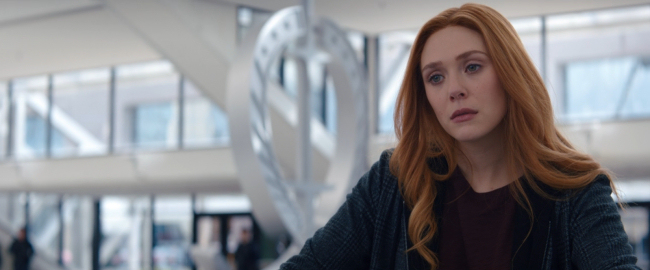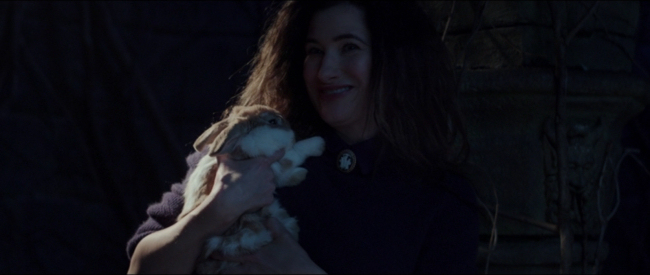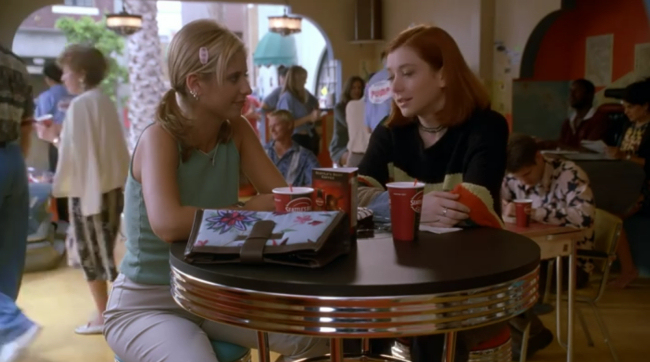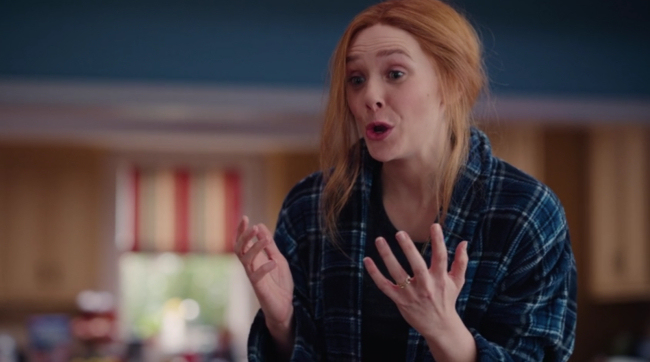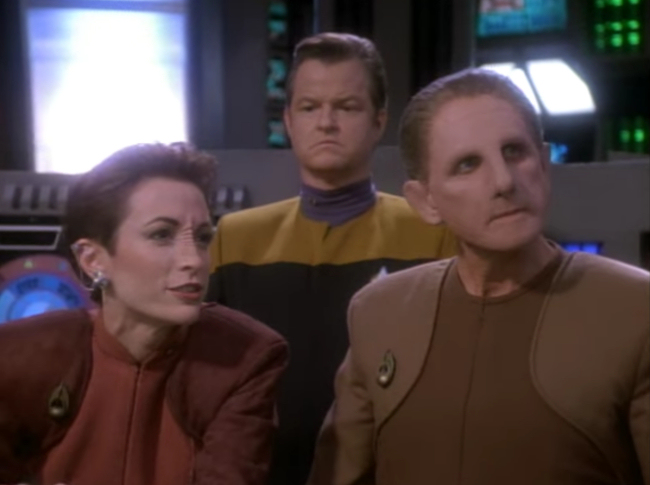
Giles tells Buffy there are two kinds of monsters in his experience--those that can be redeemed and those who can't. A useful observation in an episode of Buffy the Vampire Slayer filled with beasts in Buffy's social circle. Appropriately called "Beauty and the Beasts", it features Oz's monthly routine of turning into a werewolf, Angel still in a murderous stupor after returning from centuries in Hell, a new teenage demon "monster of the week", and arguably Faith is a monster in the making.

The idea behind Faith (Eliza Dushku) was said to be about exploring the darker side of slaying but I wonder if she wasn't more like Buffy, version two. What if Whedon took the lessons he learned from the quantum leap in writing quality from seasons one to two and asked himself what he would do if he was starting over? The idea of the helpless girl turning on her vampire attacker is a good start but not enough to fill out a character. Eliza Dushku was a better actress than Sarah Michelle Gellar and her character was immediately more complex--at once strong and vulnerable, easy-going and tightly wound. She feels much more like a teenager than Buffy, someone forced into situations where she has to make decisions far beyond her maturity level.

She's the subtlest beast in the episode, to be sure, though this one wasn't really about her. A few episodes earlier, the school counselor deduced Buffy had had a Boyfriend who'd changed and became abusive after she'd had sex with him. In this episode, that same counselor is killed by the monster of the week. The idea seems to be that the writers realised they needed to walk back the idea that Angel (David Boreanaz) and Buffy's relationship was a metaphor for an abusive one. So they set up a clear distinction between types of monsters--not the kind that can be redeemed or can't, as Giles says, but the kind that literally get taken over by a demon beyond their control and the kind that welcomes it.

Again, that's why Faith is more interesting than Oz (Seth Green) and Angel (at least at this point). She's dealing with issues, Oz and Angel are dealing with possession and most of the time they're innocent beefcakes. Well, Angel is a beefcake.

He has an easy time beating down the baddie while Oz had barely held his own in wolf form. Seriously, poor Oz must be one of the most pathetic werewolves in horror history.

I think he was meant to look like Dracula in wolf form from the Francis Ford Coppola movie but he looks more like the trolls from Ron Howard's Willow.
Twitter Sonnet #1447
The subtle breeze disturbs a paper leaf.
The worth of wooden pulp was bleached to bone.
Reflected suns suggest a solar grief.
Assembled clocks eschew the severed tone.
The kettle needed nothing more than steam.
A switching static pushed the screen away.
A thousand ducks converge to shake the stream.
To sink the night we must invite the day.
The tightened tube removed the chance of shows.
Repeating shirts divest the mall of life.
The willow fell without a score of blows.
The bridge was cut without the aid of knife.
Comparing beasts reveals the jumpy bear.
A circle stomach shines with plushy care.

